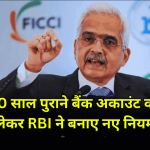
In a landmark move set to transform India’s credit ecosystem, the Reserve Bank of India (RBI) has introduced comprehensive reforms to the CIBIL score system, effective January 1, 2025. These new regulations aim to enhance transparency, promote financial literacy, and empower consumers with greater control over their credit profiles. The changes reflect the RBI’s commitment to creating a more equitable, efficient, and user-friendly credit reporting system that benefits both borrowers and lenders alike.
Understanding the Significance of CIBIL Scores
The Credit Information Bureau (India) Limited (CIBIL) score is a three-digit numerical representation of an individual’s creditworthiness, ranging from 300 to 900. This score serves as a critical financial indicator that influences loan approvals, interest rates, and credit limits. Higher scores indicate better credit management and increase the likelihood of favorable lending terms.
Before delving into the 2025 reforms, it’s important to understand how CIBIL scores impact various aspects of financial life:
| CIBIL Score Range | Classification | Impact on Loan Applications |
|---|---|---|
| 750-900 | Excellent | High approval chances, best interest rates, higher credit limits |
| 700-749 | Good | Good approval odds, competitive interest rates |
| 650-699 | Fair | Moderate approval chances, slightly higher interest rates |
| 600-649 | Poor | Limited approval possibilities, higher interest rates |
| Below 600 | Very Poor | Likely rejection, extremely high interest rates if approved |
Key Reforms Under the 2025 CIBIL Score Rules
1. Bi-weekly Score Updates
One of the most significant changes is the transition from monthly to bi-weekly credit score updates. Starting January 1, 2025, CIBIL scores will be updated every 15 days, providing consumers with more current and accurate reflections of their credit behavior.
Impact: This accelerated reporting cycle ensures that positive financial actions, such as loan repayments or credit card settlements, reflect more quickly in consumers’ credit profiles. Previously, individuals had to wait up to 45 days to see improvements in their scores after clearing dues.
2. Enhanced Notification System
The new rules mandate that financial institutions notify customers through SMS or email in several key scenarios:
| Notification Trigger | Timing | Information Provided |
|---|---|---|
| Credit Report Access | Immediate | Identity of the institution accessing the report, purpose |
| Score Changes | Within 24 hours | New score, reason for change |
| Loan Rejection | Within 48 hours | Specific reason for rejection, score factors affecting decision |
| Payment Default Warning | 7 days before reporting | Warning of potential negative impact, resolution options |
Impact: This robust notification system eliminates the information asymmetry that previously existed between lenders and borrowers. Consumers now receive timely alerts about activities affecting their credit profile, allowing them to take proactive measures to protect or improve their scores.
3. Mandatory Disclosure of Rejection Reasons
Under the 2025 rules, financial institutions must provide clear and specific reasons when rejecting loan or credit card applications based on CIBIL scores. Rather than generic statements, lenders must identify the exact factors that influenced their decision.
Impact: This transparency empowers consumers to address specific issues affecting their creditworthiness, rather than making blind attempts to improve their financial profile.
4. Expanded Free Credit Report Access
The RBI has mandated that credit information companies provide consumers with one comprehensive free credit report annually. This report must include:
- Detailed credit history
- List of all credit inquiries
- Comprehensive account information
- Factor-wise breakdown of the credit score
- Personalized suggestions for improvement
Impact: Free access to detailed credit reports promotes financial literacy and enables consumers to monitor their credit health without incurring costs.
5. Accelerated Dispute Resolution
The 2025 rules establish a stringent timeline for addressing discrepancies in credit reports:
| Stage | Previous Timeline | 2025 Timeline |
|---|---|---|
| Initial Acknowledgment | 7 days | 48 hours |
| Investigation | 45 days | 15 days |
| Resolution | 90 days | 30 days |
| Penalty for Delay | None | ₹100 per day |
If an error is not resolved within 30 days, the concerned financial institution must pay a penalty of ₹100 per day until the correction is made.
Impact: This expedited resolution process significantly reduces the time consumers spend dealing with errors in their credit reports, ensuring that inaccuracies don’t unnecessarily harm their financial opportunities.
6. Standardized Credit Score Interpretation
To eliminate inconsistencies in how different lenders interpret credit scores, the RBI has established standardized guidelines for credit score assessment:
| Score Band | Standardized Risk Assessment | Recommended Action |
|---|---|---|
| 750-900 | Very Low Risk | Eligible for premium products, best rates |
| 700-749 | Low Risk | Standard approval, competitive rates |
| 650-699 | Moderate Risk | Conditional approval, additional verification |
| 600-649 | High Risk | Limited products, higher rates or security |
| Below 600 | Very High Risk | Credit builder products, secured options |
Impact: This standardization creates a more equitable lending environment where consumers can expect similar treatment across different financial institutions based on their credit scores.
Benefits for Various Stakeholders
For Consumers
The 2025 CIBIL score reforms offer numerous advantages to individual borrowers:
- Faster Score Improvements: Positive financial actions reflect more quickly in credit profiles.
- Better Information Access: Timely notifications about credit activities and free annual reports.
- Greater Transparency: Clear understanding of factors affecting loan approvals and rejections.
- Efficient Dispute Resolution: Faster correction of errors in credit reports.
- Consistent Evaluation: Standardized interpretation of credit scores across lenders.
For Lenders
Financial institutions also benefit from these reforms:
- More Accurate Risk Assessment: Bi-weekly updates provide more current information for evaluating creditworthiness.
- Reduced Default Rates: Early warning systems help identify potential payment issues.
- Improved Customer Trust: Transparent processes build stronger relationships with borrowers.
- Streamlined Compliance: Clear guidelines for credit reporting and evaluation.
- Efficiency Gains: Standardized processes reduce administrative overhead.
For the Economy
The broader economic impact includes:
- Expanded Credit Access: More transparent scoring helps responsible borrowers access credit.
- Reduced Bad Loans: Better risk assessment leads to lower non-performing assets.
- Financial Inclusion: Greater understanding of credit scores encourages participation.
- Market Efficiency: Standardized practices create a more equitable credit marketplace.
- Consumer Empowerment: Financial literacy improves overall economic decision-making.
Preparing for the New CIBIL Score Landscape
As these reforms take effect, consumers can take several steps to optimize their credit profiles:
Immediate Actions
- Access Your Free Credit Report: Obtain your comprehensive report and understand your current standing.
- Set Up Notifications: Ensure your contact details are updated with all financial institutions.
- Review Existing Credit: Check for errors or discrepancies that need correction.
- Address Outstanding Issues: Clear any pending payments or disputes.
Long-term Strategies
- Regular Monitoring: Track your bi-weekly score updates to understand patterns.
- Timely Payments: Ensure all loan EMIs and credit card bills are paid before due dates.
- Balanced Credit Mix: Maintain a healthy combination of secured and unsecured credit.
- Controlled Credit Utilization: Keep credit card usage below 30% of available limits.
- Strategic Credit Applications: Avoid multiple loan or credit card applications in short periods.
Implementation Timeline
The RBI has outlined a phased approach for implementing these reforms:
| Phase | Timeline | Focus Areas |
|---|---|---|
| Phase 1 | January 1, 2025 | Bi-weekly updates, notification system |
| Phase 2 | April 1, 2025 | Free credit reports, rejection disclosure |
| Phase 3 | July 1, 2025 | Dispute resolution, standardized interpretation |
| Full Implementation | October 1, 2025 | Complete integration, compliance review |
Conclusion
The CIBIL Score Rules 2025 mark a watershed moment in India’s credit reporting landscape. By prioritizing transparency, efficiency, and consumer rights, these reforms create a more equitable financial system where individuals have greater control over their credit health.
The bi-weekly updates, enhanced notifications, clear rejection disclosures, free credit reports, and expedited dispute resolution collectively empower consumers with the tools and information needed to make informed financial decisions. Meanwhile, lenders benefit from more accurate, current data and standardized practices that streamline operations.
As these reforms take effect, both consumers and financial institutions should prepare for a new era of credit reporting—one characterized by greater transparency, fairness, and financial empowerment. Those who embrace these changes and adapt their financial habits accordingly will be well-positioned to thrive in India’s evolving credit ecosystem.
FAQs
Q: Will my CIBIL score automatically improve under the new rules? A: No, the rules change how scores are reported and accessed, not the fundamental factors that determine your score.
Q: How can I get my free annual credit report under the 2025 rules? A: You can access it through the official websites of approved credit bureaus like CIBIL, Experian, Equifax, and CRIF High Mark.
Q: Do the new rules apply to all types of loans and credit cards? A: Yes, the rules apply to all credit products reported to credit bureaus, including personal loans, home loans, auto loans, and credit cards.
Q: If I find an error in my credit report, how quickly will it be corrected under the new rules? A: Errors must be resolved within 30 days, with financial institutions facing penalties for delays beyond this period.













